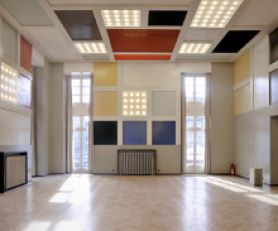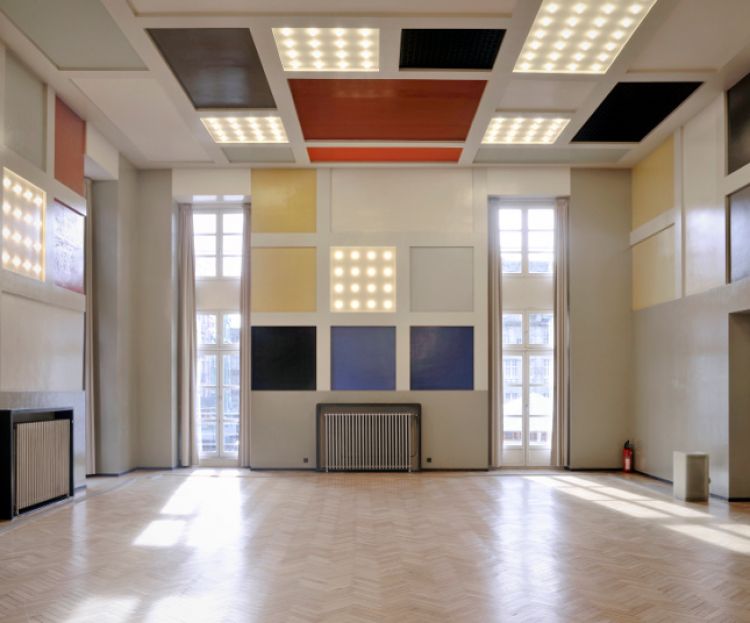Festivities Room

For the "Salle des Fêtes", Van Doesburg adopted an exclusively orthogonal composition, with relief vertical and horizontal lines. The rectangles and squares created by the meeting of the lines thus appear hollow. The chromatic range is that favoured by the Neoplastic aesthetic: primary colours (yellow, blue, red) and "non-colours" (black and white). Two shades of the same colour are juxtaposed in order to create "dissonance". In this arrangement of coloured geometric surfaces there are also enamel squares and rectangles, each containing 16 electric light-bulbs. Artificial lighting thus becomes part of the visual composition and contributes to the enlivenment and rhythm of this festive space.
The use of a standard unit of measurement also promotes the structural readability of the whole. To determine the arrangement of the coloured surfaces, the lighting and existing features like the ventilation grilles or the windows, Van Doesburg used as a template a square of 1.20 m x 1.20 m, which corresponds to the height of the radiators. All the elements are considered as organic parts of the rectilinear composition.
